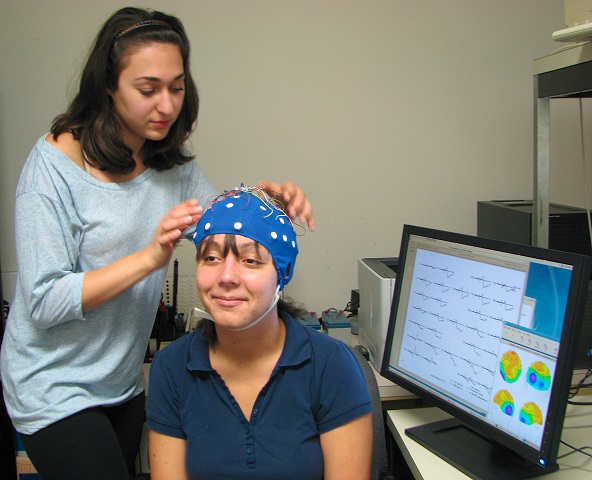پژوهشگران دانشگاه فدرال ریوگرانده دو نورته برزیل، دانشگاه لیسستر انگلستان، و یونیورسیتی کالج لندن در پژوهشی بدیع که به تازگی منتشر شده است به معرفی شیوهای نوین جهت پردازش امواج مغزی در راستای تحلیل پتانسیل وابسته به رخداد (ERP) پرداختند.
? تاکنون، بطور معمول در تحلیل امواج مغزی (EEG) بیشتر بررسیهای مربوط به ERP در حد حضور و یا عدم حضور آنها در زمانهای مورد نظر بود که شامل قلهها، شیب، و تاخیر/تقدم فاز آنها می شد.
??? نتایج پژوهش حاضر نشان دادند:
- در پژوهش حاضر، متخصصان با استفاده از شبیهسازی، پردازش امواج مغزی، و کمّیسازی ERP در چهار پژوهش آزمایشی، به استاندارد و الگوریتمهای محاسباتی برای بررسی توان و قدرت این امواج دست یافتند.
- قابلیت ادغام روش حاضر با نرم افزارهای موجود در حوزه MEG، نوروفیدبک، و LFP برای نوروتراپی به شکلی کاملاً سازگارانه در نظر گرفته شده است.
- بررسی وضعیت ERP حسب این روش منجر به افزایش دقت در تشخیص وضعیت فعلی اختلالات، وضعیت پیشرفت، پیشآگهی، و نیز بهبود توان مداخلات نوروتراپی میشود.
? برای توضیحات بیشتر در حوزه این نرم افزار به صفحه نرمافزار تحلیل ERP مراجعه فرمایید.
برای دانلود به این نرمافزار میتوانید به لینک نرم افزار تحلیل ERP مراجعه نمایید.
Extracting information from the shape and spatial distribution of evoked potentials
Abstract
Background: Over 90 years after its first recording, scalp electroencephalography (EEG) remains one of the most widely used techniques in human neuroscience research, in particular for the study of event-related potentials (ERPs). However, because of its low signal-to-noise ratio, extracting useful information from these signals continues to be a hard-technical challenge. Many studies focus on simple properties of the ERPs such as peaks, latencies, and slopes of signal deflections.
New method: To overcome these limitations, we developed the Wavelet-Information method which uses wavelet decomposition, information theory, and a quantification based on single-trial decoding performance to extract information from evoked responses.
Results: Using simulations and real data from four experiments, we show that the proposed approach outperforms standard supervised analyses based on peak amplitude estimation. Moreover, the method can extract information using the raw data from all recorded channels using no a priori knowledge or pre-processing steps.
Comparison with existing method(s): We show that traditional approaches often disregard important features of the signal such as the shape of EEG waveforms. Also, other approaches often require some form of a priori knowledge for feature selection and lead to problems of multiple comparisons.
Conclusions: This approach offers a new and complementary framework to design experiments that go beyond the traditional analyses of ERPs. Potentially, it allows a wide usage beyond basic research; such as for clinical diagnosis, brain-machine interfaces, and neurofeedback applications requiring single-trial analyses.
Keywords
Wavelet decomposition, Event-related potentials, EEG.
لینک منبع پیشنهادی برای مطالعه بیشتر  (further reading)
(further reading)









